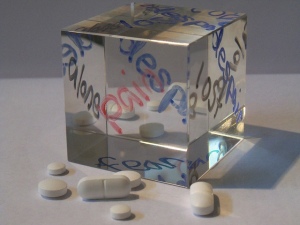Hope and willingness
“I had a little willingness, and I ran with it … it keeps me grateful for what I have today, that I can help these people.” — Aaron Fitzgerald
A doctor who specializes in treating student athletes for concussions warns parents to scrutinize prescriptions for dangerous pain medications written by other physicians and practitioners.
The manager of a support network for parents with children who are addicted to heroin, OxyContin and other drugs is pained less by the known numbers than by those unseen families who continue to suffer in silence.
A father with a son and daughter both recovering from opiate addictions recalls being on his knees begging them to get help, describing mornings when he literally felt unable to get dressed for work.
“It’s not stopping. It’s just getting worse and worse,” says one recovering addict, a young man raised in New Hampshire who has stayed sober and been helping others for more than three years.
The continuing surge of heroin addictions and other opiods abuse seems to be the monster public health threat of our day, especially affecting young adults in their late teens through their thirties. Preventing and overcoming addiction feels like trying to capture the proverbial giant squid or white whale. Many of those involved in this pursuit recognize the multiple hands and angles it will take to get their arms fully around this threat. This includes a greater government commitment to fund treatment and recovery, integrated health care initiatives that address patients’ substance abuse and behavioral needs, monitoring and reducing prescriptions written for pain medications, taking on Big Pharma, establishing more drug courts, and much more.
In the region where I live, Plymouth County in southeastern Massachusetts, official overdose deaths spiked from 33 in 2009 to 72 last year. Some authorities believe that number does not reflect the actual impact, and of course, statistics only tell part of the story.
Families and communities everywhere are being ravaged by addiction. It may seem like public awareness is growing—just in the past month I’ve gone to three well-attended forums in neighboring towns offering strategies to families, for example—while hospitals and parents’ groups appear to be stepping up their commitment.
But are we really making headway? And when the glare of media reports and our often short-lived attention spans have moved on, what remains that’s truly useful for those going through this?
Until a massive effort is made to combat gargantuan forces—providing more inpatient beds, and attempts such as my state’s bid to ban controversial painkillers like Zohydro ER, come to mind—for now, isn’t this just a quixotic chase?
Please click here to Ken’s blog on Psychology Today to continue reading, especially about recovering addict Aaron Fitzgerald’s commitment to help others, and strategies that arise from his family’s experience.
Author’s Note: This is one in a continuing series of posts about opiate addiction and preventive strategies for families. This dovetails with upcoming educational forums to be hosted at Hope Floats Healing & Wellness Center in Kingston, Ma. Please feel free to share this with friends, especially throughout southern New England and our immediate area.
Are we really making headway?


Ken,
Thanks for raising awareness for this
Nancy, you’re welcome, and thanks for the feedback. It’s such a devastating problem, and we hope to do something in our community to assist, which my writing dovetails with.